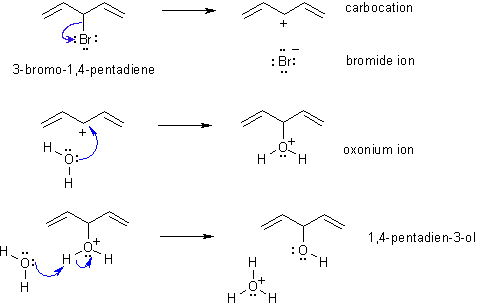(a)

(b)

(c) Note the similarity
of this answer to that in part (a)

(d) They are constitutional isomers as they have different names (the locants are different).
If you struggle with this type of question, first draw the compounds whose names are provided (if you can't then review your nomenclature) then think about the types of reactions (e.g. acid / base) and try to fill in the structures in the gaps, then finally add the required curly arrows to account for all the bonding changes.



(d) They are constitutional isomers as they have different names (the locants are different).
If you struggle with this type of question, first draw the compounds whose names are provided (if you can't then review your nomenclature) then think about the types of reactions (e.g. acid / base) and try to fill in the structures in the gaps, then finally add the required curly arrows to account for all the bonding changes.